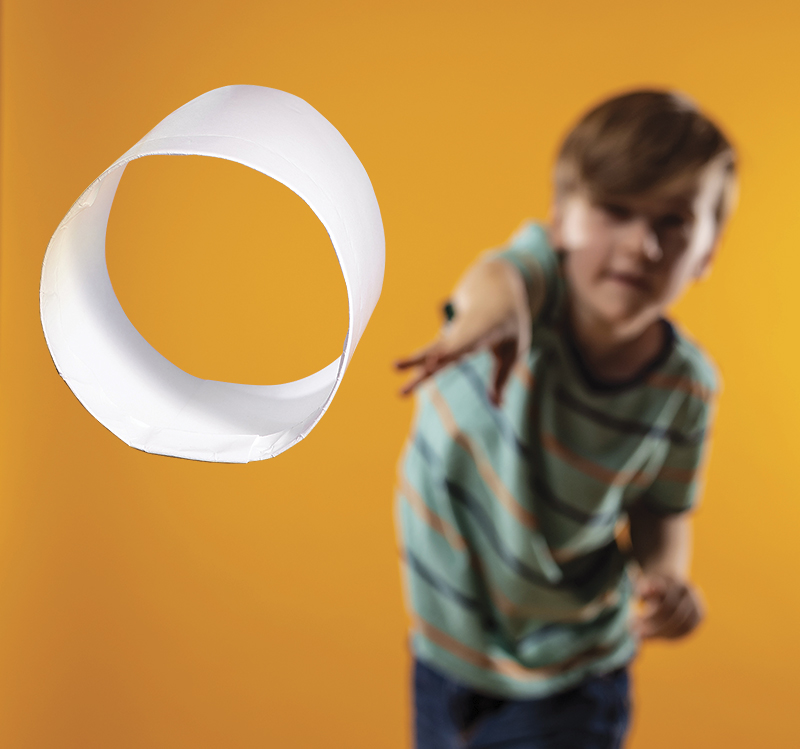Flying paper airplanes is a blast for a nine-year-old and an escape for a tired office worker - or, say, a cube-satellite systems lead. We asked Collin Cupido, '14 BSc(Hons), about his favourite design. He is the systems lead on Ex-Alta 1, Alberta's first satellite. He says any plane has some sort of wing and the ability to glide. "Everything else is up for interpretation." His favourite is a flying tube>. "It reminds me to think outside the box when solving problems or coming up with new ideas. This design shows that simple and weird can be really effective." Here's how to do it:
-
Place a piece of paper horizontally on a surface in front of you.

-
Fold the top third towards you, lengthwise, making a crease.

-
Fold the top edge in half again, so the creased edge is level with the edge you just folded.

-
Fold that section in half one more time, making sharp creases.

-
Unfold that last crease. Hold on to the vertical edges of the paper.

-
Join the vertical edges of the paper to make a tube, tucking 4 cm of one edge under the other's fold.

-
Find the line from that last crease and refold inwards around the tube's edge, smoothing it out.

-
Throw it folded edge first with a gentle spin, like a football.

Illustrations by Ryan Garcia
TROUBLESHOOT ANY PAPER AIRPLANE
How any plane flies, whether it's metal or paper, has to do with where its centre of gravity and centre of lift are in relation to each other. Logan Jones, '06 BSc(MechEng), a runway safety specialist for Airbus in Miami, knows how to adjust a paper flyer when it's just not flying right. With a typical, pointy-nosed craft, he says, you can accomplish this with a few tweaks - no need to start from scratch.
Nosediving into the ground?
The centre of lift is too far behind your centre of gravity, causing the airplane to pitch downward. The fix: Move the centre of gravity back a little. Add a paper-clip to the back centre, adjusting it forward and back until your plane flies right. Or give the back of the wings a little up-curl to bring the nose up.
Pitching up and stalling?
The centre of lift is forward of your centre of gravity. The fix: Add some weight to the front of the plane with a paper-clip, adjusting it until your plane flies right. Or curl the back of the wings downward to correct the problem.
Best practices
A good plane is symmetrical and has its centre of lift close to, but slightly behind, the centre of gravity.
Favourite designs
Jones really likes the elegance of the Harrier.
For speed and stunts, he recommends the more complicated Squirrel.

We at New Trail welcome your comments. Robust debate and criticism are encouraged, provided it is respectful. We reserve the right to reject comments, images or links that attack ethnicity, nationality, religion, gender or sexual orientation; that include offensive language, threats, spam; are fraudulent or defamatory; infringe on copyright or trademarks; and that just generally aren’t very nice. Discussion is monitored and violation of these guidelines will result in comments being disabled.